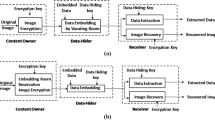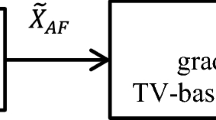Abstract
The rapid development of blockchain technology has greatly changed people’s daily lives from financial market to healthcare field. Today, adulterated images appear in large numbers, causing a serious threat to personal privacy and social stability. At present, the research on blockchain is mainly focused on chain data transmission. Though the blockchain can ensure that the chain data transmission is not tampered, it is difficult to ensure that the data is real when placed on the system initially. In addition, the immutability will be destroyed when 51% attacks occur. Taking this point into consideration, it is necessary to identify the image authenticity on the blockchain. Diffusion-based inpainting is a common method of image tampering. Considering the blurring effect introduced by diffusion-based image inpainting, this paper proposes an image forensics method of diffusion-based image inpainting via weighted least squares filtering enhancement. The texture of the forged image is clear in the untouched regions, and the blurring effect leads to some texture changes in the inpainted regions. Weighted least squares filtering can preserve the texture structure of the untouched regions better and highlight the blurring effect of the inpainted regions. In view of the different reflects of the tampered information in different color channels, weighted least squares filtering is applied to enhance each color channel of the input image, which can capture the impact of image inpainting from multiple perspectives. The experimental results show that the proposed method not only makes up for the deficiency of previous blockchain forensics effectively, but also has better detection performance than the existing work.




Similar content being viewed by others
References
Wang S, Ouyang L, Yuan Y et al (2019) Blockchain-enabled smart contracts: architecture, applications, and future trends. IEEE Transactions on Systems, Man, and Cybernetics: Systems 49(11):2266–2277
Yao H, Mai T, Wang J et al (2019) Resource trading in blockchain-based industrial internet of things. IEEE Transactions on Industrial Informatics 15(6):3602–3609
Ariatmanto D, Ernawan F (2020) An improved robust image watermarking by using different embedding strengths. Multimed Tools Appl 79:12041–12067
Kim WH, Nam SH, Kang JH et al (2019) Robust watermarking in curvelet domain for preserving cleanness of high-quality images. Multimed Tools Appl 78:16887–16906
Wan W, Wang J, Li J et al (2018) Hybrid JND model-guided watermarking method for screen content images. Multimed Tools Appl 4907–4930:79
Tang Z, Chen L, Zhang X et al (2019) Robust image hashing with tensor decomposition. IEEE Trans Knowl Data Eng 31(3):549–560
Gul E, Ozturk S (2019) A novel hash function based fragile watermarking method for image integrity. Multimed Tools Appl 78:17701–17718
Su Z, Yao L, Mei J, Zhou L, Li W (2020) Learning to hash for personalized image authentication. IEEE Transactions on Circuits and Systems for Video Technolog. https://doi.org/10.1109/TCSVT.2020.3002146
Shrestha R, Nam SY (2019) Regional blockchain for vehicular networks to prevent 51% attacks. IEEE Access 7:95033–95045
Sheng H, Shen X, Lyu Y et al (2018) Image splicing detection based on markov features in discrete octonion cosine transform domain. IET Image Process 12(10):1815–1823
Bahrami K, Kot AC, Li L et al (2015) Blurred image splicing localization by exposing blur type inconsistency. IEEE Transactions on Information Forensics and Security 10(5):999–1009
Islam MM, Kamruzzaman J, Karmakar G et al (2018) Passive detection of splicing and copy-move attacks in image forgery. In: Conference 2018, LNCS, pp 555–567, vol 2018. Springer International Publishing, Cham
Amrani N, Serra-Sagristà J, Peter P et al (2017) Diffusion-based inpainting for coding remote-sensing data. IEEE Geosci Remote Sens Lett 14(8):1203–1207
Li S, Yang X (2017) Novel image inpainting algorithm based on adaptive fourth-order partial differential equation. IET Image Process 11(10):870–879
Li H, Luo W, Huang J (2017) Localization of diffusion-based inpainting in digital images. IEEE Transactions on Information Forensics and Security 12(12):3050–3064
Guillemot C, Inpainting OLMI (2014) Overview and recent advances. IEEE Signal Process Mag 31(1):127–144
Buyssens P, Daisy M, Tschumperlé D et al (2015) Exemplar-based inpainting: technical review and new heuristics for better geometric reconstructions. IEEE Trans Image Process 24(6):1809–1824
Bertalmio M, Sapiro G, Caselles V et al (2000) Image inpainting, In Proc. 27th Annu Conf Comput Graph Interact Techn, New York, NY, USA, pp 417–424
Farbman Z, Fattal R, Lischinski D et al (2008) Edge-preserving decompositions for multi-scale tone and detail manipulation. ACM Trans Graph 27(3):1–10
Song Y, Wu W, Liu Z et al (2016) An adaptive pansharpening method by using weighted least squares filter. IEEE Geosci Remote Sens Lett 13(1):18–22
Min D, Choi S, Lu J et al (2014) Fast global image smoothing based on weighted least squares. IEEE Trans Image Process 23(12):5638–5653
Arablouei R, Dogancay K (2012) Reduced-complexity constrained recursive least-squares adaptive filtering algorithm. IEEE Trans Signal Process 60(12):6687–6692
Jiang Y, Wang M (2014) Image fusion using multiscale edge-preserving decomposition based on weighted least squares filter. IET Image Process 8(3):183–190
Ren Y, Yang J, Zhao L et al (2019) A global weighted least-squares optimization framework for speckle filtering of polsar imagery. IEEE Trans Geosci Remote Sens 57(3):1265–1277
Schaefer G, Stich M (2003) UCID: An uncompressed color image database. Proc SPIE 5307:472–480
G’MIC: GREYC’s magic for image computing. Available: http://gmic.eu. Accessed on Jun. 1, 2016
Criminisi A, Perez P, Toyama K (2004) Region filling and object removal by exemplar-based image inpainting. IEEE Trans Image Process 13(9):1200–1212
Zhang Y, Song W, Wu F, Han H, Zhang L (2020) Revealing the traces of nonaligned double jpeg compression in digital images. International Journal for Light and Electron Optics 204:164196
Acknowledgements
This work is mainly funded by the National Natural Science Foundation of China (grant no. 61762085), the Natural Science Foundation of Shanghai (grant no. 17ZR1411900), the Opening Project of Shanghai Key Laboratory of Integrated Administration Technologies for Information Security (grant no. AGK2015006), the Natural Science Foundation of Xinjiang (grant nos. 2020D01C047, 2019D01C081), the Founding Program for the Cultivation of Young University Teachers of Shanghai (grant no. ZZGCD15090).
Author information
Authors and Affiliations
Corresponding author
Additional information
Publisher’s note
Springer Nature remains neutral with regard to jurisdictional claims in published maps and institutional affiliations.
Rights and permissions
About this article
Cite this article
Zhang, Y., Liu, T., Cattani, C. et al. Diffusion-based image inpainting forensics via weighted least squares filtering enhancement. Multimed Tools Appl 80, 30725–30739 (2021). https://doi.org/10.1007/s11042-021-10623-7
Received:
Revised:
Accepted:
Published:
Issue Date:
DOI: https://doi.org/10.1007/s11042-021-10623-7




